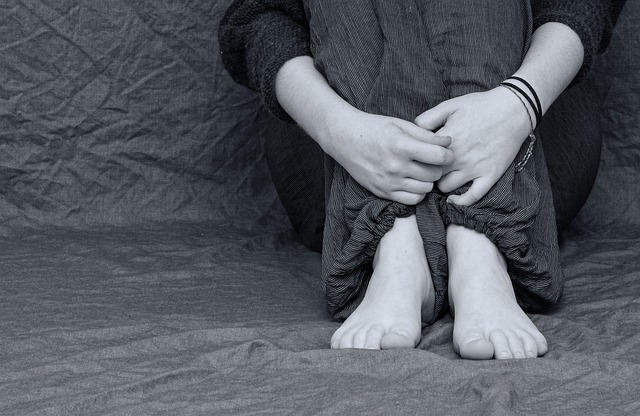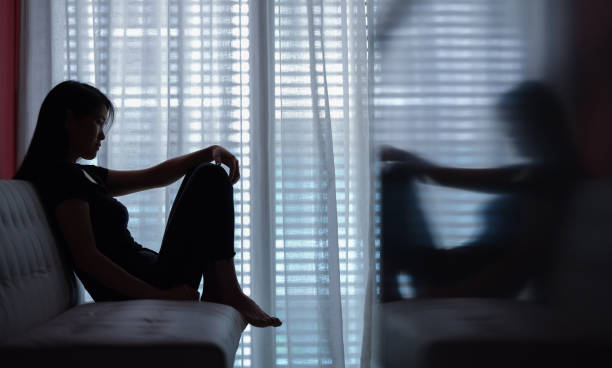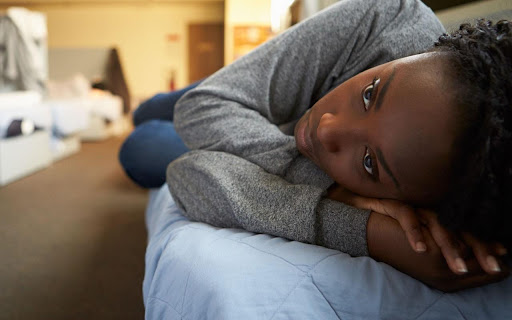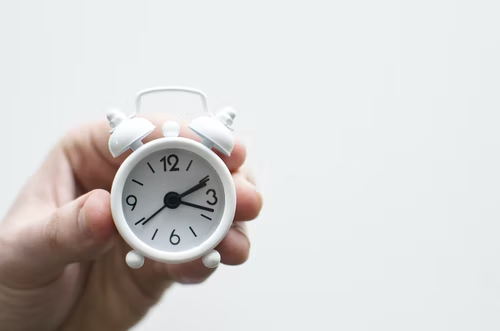8 Basic Anxiety Techniques for Thoughts, Feelings, and Behavior
Anxiety is a feeling. Anxiety happens in our minds. When we worry and end up getting panic attacks, it's because our minds can't control the feelings we have toward something. Learn more about how to control your thoughts and feelings with these 8 basic techniques for anxiety.
1. The ABC Model
The ABC model is a cognitive-behavioral tool for working with anxiety-provoking thoughts, feelings and behaviors. The ABC model is a helpful tool to use when you are feeling anxious. It also is helpful when you are trying to change the way you think about something or trying to change your behavior.
A stands for Activating Event. This is the thing that starts your anxiety. For example, if you have social anxiety, an activating event could be walking into a room full of people.
B stands for Beliefs. These are the thoughts that come up in response to the activating event. For example, “They'll notice how nervous I am” or “I'm going to say something stupid”. These thoughts can be true or false. But they usually lead to more anxiety because they make you think things will go badly when they don't need to go badly at all!
C stands for Consequences of Thinking Those Thoughts (Consequence). The consequences are what happens after thinking those beliefs: more anxious feelings and behavior like avoiding social situations or avoiding eye contact with people in those situations.
You can use this model in order to gain a better understanding of what is causing your anxiety and how you might be able to control it.
2. Cognitive Behavioral Therapy (CBT)
CBT can help you deal with all kinds of mental health issues, such as depression, anxiety and phobias. It can also help you to deal with stress and other problems in your life.
CBT is based on the idea that negative thoughts cause negative feelings — so if we change our thoughts, we can change our feelings too. This makes sense because when we feel bad, we tend to have negative thoughts about ourselves or others around us.
For example, if someone has a phobia of snakes and sees one in real life, they may experience a panic attack because their body reacts strongly to the sight of a snake (even though they know it won't hurt them). However, if they were told that snakes are harmless or even beneficial animals before seeing one, they might not have such a strong reaction to it at all because their brain would already have been programmed with positive thoughts about snakes.
3. Mindfulness-Based Stress Reduction (MBSR)
Mindfulness-based stress reduction (MBSR) is a group program designed to help participants develop the skills needed to cope with daily stress. The program also teaches people how to recognize and accept their feelings, as well as how to respond more effectively when negative thoughts arise.
The MBSR program was developed by Jon Kabat-Zinn in 1979 at the University of Massachusetts Medical Center. It has since been used in many types of healthcare settings, including hospitals and schools.
MBSR is based on the idea that meditation practice can reduce your stress levels and increase your sense of well-being. The program includes training in both formal meditation techniques and informal mindfulness practices that you can use throughout the day. You’ll also learn about how you can use these techniques to deal with pain, illness, or other problems that may be affecting your life.
4. Relaxation Techniques
Relaxation techniques are an easy way to manage anxiety and stress. When you're feeling anxious, your body can get tense in response to the fight-or-flight response. Relaxation techniques help your body relax and bring it out of this state.
Breathing exercises. Breathing exercises can help you relax by slowing down your breathing, which calms the nervous system and reduces stress levels.
Visualization exercises. Visualization exercises involve creating images in your mind that are designed to help you feel better. For example, imagining yourself on a beach could be relaxing because it involves warm temperatures and beautiful scenery.
Progressive muscle relaxation (PMR). PMR involves tensing and then releasing different muscle groups throughout the body until you feel relaxed all over. PMR is often taught in conjunction with other relaxation techniques because it helps people learn how their bodies react when they're stressed out so they can recognize the signs of stress more quickly in the future.
5. Meditation for Anxiety Relief
Meditation for anxiety relief is one of the most effective ways to manage the symptoms of anxiety. In fact, meditation has been found to be as effective as medication in treating the disorder.
Meditation for anxiety relief isn't just about sitting quietly with your eyes closed. It's about using your mind to help you manage your feelings and behaviors.
The practice of meditation may sound like it's only for people who are spiritual or religious, but that's not true at all. Meditation can be used by anyone who wants to better understand themselves and their emotions — no matter what religion they follow or whether they believe in any type of higher power at all.
6. Social Skills Training for Social Anxiety Disorder (SAD)
Social anxiety disorder is a common and often disabling condition that can interfere with an individual's ability to function in daily life. People with social anxiety disorder (also called social phobia) have a persistent and chronic fear of being watched and judged by others and of doing things or performing in front of other people that will cause them to be embarrassed, humiliated, or rejected.
Social skills training is a type of cognitive-behavioral therapy (CBT). It helps people with social anxiety disorder learn how to interact with others more effectively by changing their behavior, thoughts, and feelings about themselves.
Social skills training for social anxiety disorder involves identifying the particular situations that make you feel anxious, feeling physical symptoms of anxiety (such as butterflies in your stomach), thinking about what you need to do to feel better about yourself, and taking action. This may involve practicing techniques such as deep breathing or muscle relaxation techniques before entering into the situation that makes you feel anxious. Then when you're actually in the situation, try to focus on what the person is saying rather than worrying about how well you're saying it or worrying about what they think of you.
7. Touch something comforting
Many people with anxiety have a “comfort object” they rely on in times of stress. These objects can be anything from stuffed animals to blankets to jewelry, but they all have one thing in common: They provide a sense of calm and comfort when they're used.
The reason that these items are so effective at reducing anxiety is because they trigger an “appetitive” response in the brain — meaning that they activate the same part of the brain that's involved in reward and pleasure. This has been studied extensively by neuroscientists and psychologists, who have found that touching a comforting object can reduce stress hormones like cortisol and noradrenaline, as well as increase serotonin levels in the brain.
That's why some people use these objects as self-soothing techniques for managing their thoughts and feelings.
8. Use positive self-talk
Positive self-talk is a coping skill that involves talking to yourself in a positive way. When you do this, you're trying to change how you interpret events in your life so that they're easier for you to deal with. For example, if someone gives you an assignment at work that makes you feel anxious, instead of telling yourself “this is going to be impossible for me,” try telling yourself “I can do this.”
You can also use positive self-talk when dealing with physical symptoms of anxiety like racing heartbeats or shortness of breath by telling yourself things like “my heart rate is normal” or “I'm breathing just fine.”
So, instead of saying negative things about yourself, be kind and say positive words that can reduce your anxiousness.
Thoughts are merely a reflection of your history, and you can use this to your advantage. The subconscious mind works in the present, so if it is trained to have new results, then every time that feeling of anxiety comes back, you'll be able to stop it in its tracks by pulling up these techniques. One day soon, you won't even remember why you were ever anxious.
For more helpful and informative insights, visit here.





